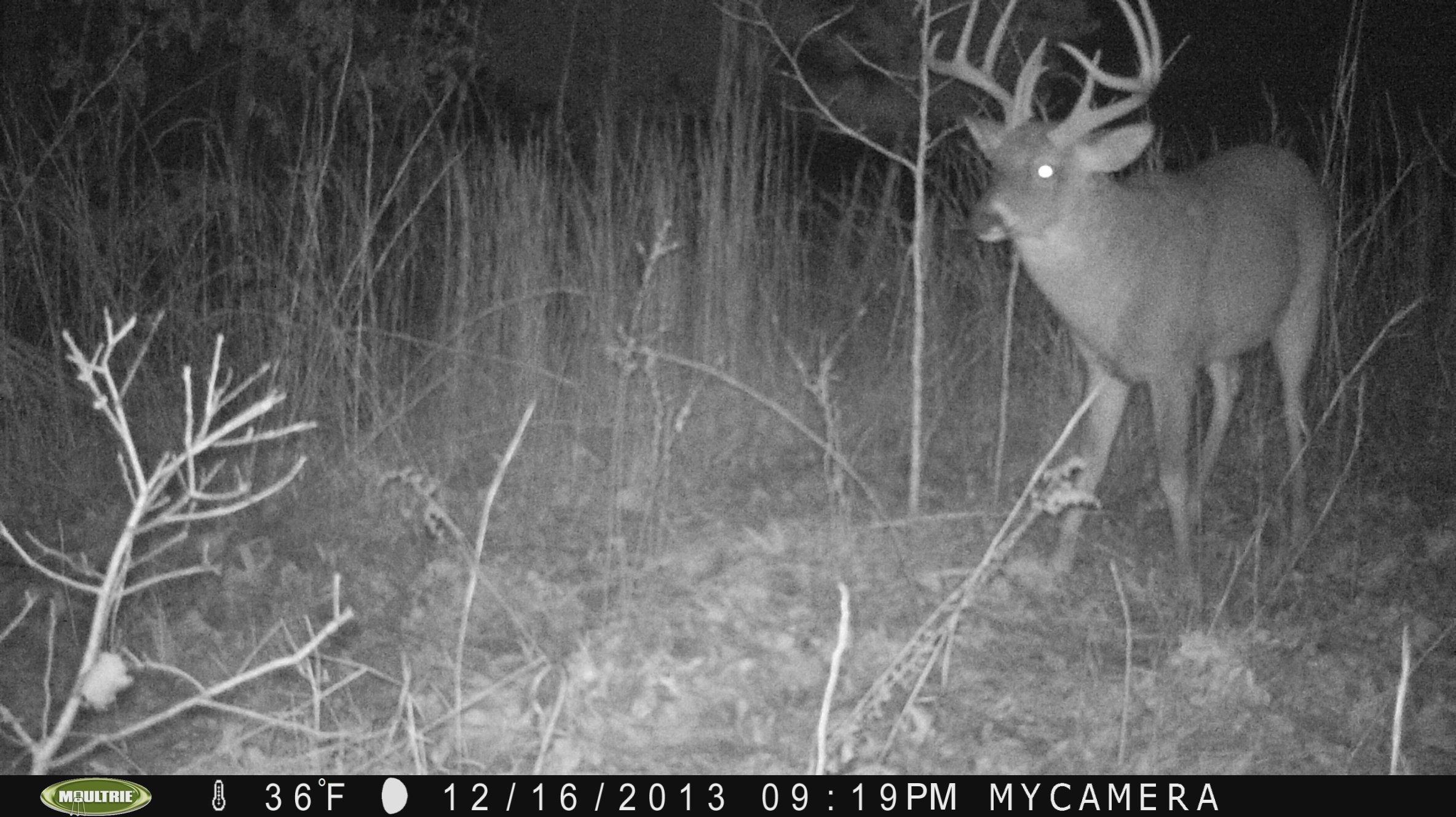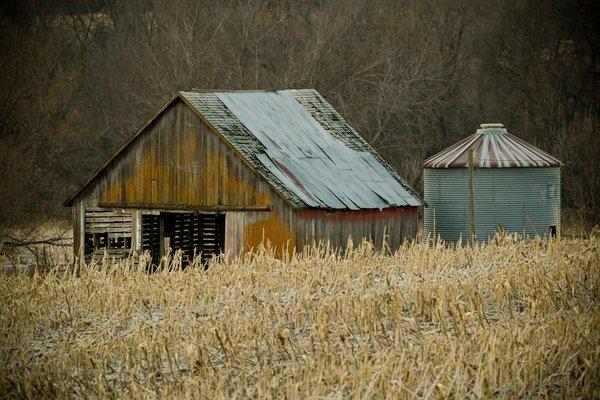Tips for hunting the season's final weeks, no matter where you live
The end is near. After months of hope and promise, it's come to this: The late season.
Let's put things in perspective here. There are many fewer deer running around the woods and fields now than just a few weeks ago. Freezers are full, deer are on edge. The weather can be downright brutal.
That all said, you've still got a tag or two left to fill. And fill it you will. If you follow this plan.
THE DATES: December 10 - January 31
THE LOCATION: Southeast
THE TACTIC: Take advantage of Dixie rut action.

But it is the late season. The right combination of food and cold weather in a spot that hasn't had every Bubba around firing high-powered rifles across it for six weeks on end can produce some of the most sure-fire hunting of the season.
But you know that already. It's been rewritten and reworded numerous times. But camping on food sources isn't your only option for the late season if you're hunting down south. Around here, in some ways, deer season is just getting started. This is Dixie, man. Land of rebel flag bikinis, highway litter and late deer ruts.
So often, we lump the rut into early and mid-November. For most of the country, including my western Kentucky stomping grounds, that mid-western timing is just about right.
Things are different just 100 miles south. In the river bottoms of southwest Tennessee, hunters routinely see the best rut activity around the first of December. Down in the Delta Region of Mississippi in counties like DeSoto, Marshall, Tunica, and Tate, the peak conception time for whitetail fawns is historically around December 6.
Of course, other areas of the South are infamous for their late ruts. Texas is big enough to be considered a region unto itself, with fawn conception dates ranging from late August to the first of February. But Southwest Texas, long a favored stop for the Realtree cameras and Monster Bucks video crews, is well known for rattling action come December. Historically, peak breeding in the Trans-Pecos and South Texas Plains ranges from December 8-24.
And of course, there's the famed Black Belt Region of Alabama, a 70-mile-wide band of rich soil and row crop agriculture that stretches across the southern portion of the state, just north of the edge of the coastal plain. The Black Belt is well known for producing some of Alabama's largest bucks, and the region sees some of the latest rut activity in the nation, with peak conception dates historically occurring around January 20.
Obviously, this all means that while the Yankees are shoveling snow out of their treestands, you still have ample opportunity to crash rattling horns together or shoot a buck over a mock scrape down South. So get to it.
Key Dates to Remember:
January 1: Last day of Mississippi Bow Season
January 19: Last day of firearm / muzzleloader season in South Texas
February 10: Final day of deer season in select Alabama counties
Big Buck To Prove It: Bucks that become local legend are always the best stories. Tennessee hunter Mike Barker shot The Reindeer Buck in late December of 2010. Take a look at that 28-inch spread and you quickly see where the buck got its name.
Key Gear to Own: Realtree Energy Drinks. At this point, you need pep to keep you going and in the game. Plus, the empty bottles make a fine tobacco spitter.
Deer Camp Etiquette Tip: Late season is deer dog season in many parts of the Deep South. And man, what a contentious topic. Although the sport of deer dogging is dying due largely to dwindling size of the average hunting area and political pressure, a few hold-outs cherish this time-honored hunting tradition. Rather than start an argument, why don't we try this: Getting along? Deer doggers, control your hounds and respect the property boundaries. Still-hunters, understand the guys with the dogs bought their licenses and want to go home with a buck, same as you.
Southern Deer Lingo of the Month: Dang.That doe has balls.
By late January, quite a few bucks are dropping their antlers. Be especially mindful of what you're shooting this time of year.
THE LOCATION: Midwest
THE DATES: December 10 - January 31
THE TACTIC: Scout, Scout, Hunt.
The last few days of the whitetail season can produce some of the most reliable and predictable action of the year. It's action that can also include the oldest, biggest bucks around. Bucks that may not have been in the area you're hunting during any other time of the year. As much as I love to hunt the rut, I personally believe the late season offers the very best opportunity to kill a targeted animal.

If you hunt an area that received heavy, sustained hunting pressure during previous hunting seasons, the odds of you being able to target a mature buck on a late-season pattern are much lower than when hunting an area where hunting pressure was more moderate.
All of the areas that I will target during the late season received some level of hunting pressure during gun season. In fact, several of them were hunted every day for the duration of Michigan's 16-day season. But the key now is this: A period of respite. There must be some time during which the area receives absolutely no hunting pressure at all. This is critical.
The second ingredient is food. Even on those areas where gun season pressure was intense, there is still a chance that late-season hunting can be productive. If the land has a good food source -- this is required -- and doesn't receive any type of hunting pressure for about a week, it's possible that the spot can produce during late season. But as soon as that area is hunted or otherwise compromised, the clock resets and you'll need at least another week of zero pressure for those deer to settle back in and move during daylight.
My late season plan of attack is quite simple: I'm going to spend as much time as I can spare looking at as many areas as I can. I'm scouting for locations that have been left completely alone for at least a week and that have a suitable food source.
In my area of Michigan, crop fields are going to be the primary draw. By now, the vast majority of crops have been cut. Cut bean fields are my first choice followed closely by cut corn. If I can find a standing bean field, that's nirvana. But they are few and far between now. I'm actually not much of a fan of standing corn during the late season. Sure, deer will be in it. And that's the problem. They'll stay in it and seldom leave it. There are those who will think they can move those deer out of that corn. You can. But you won't kill one doing it.
Michigan's muzzleloader season starts six days after the gun season ends. By the time muzzleloader season opens, I'll have a pretty good idea of which areas I'd like to focus on based on available food and previous hunting pressure. The first few days of the muzzleloader season, I'll continue to scout from afar. But I'm not looking for deer. I'm looking for hunters.
If I see a hunter parked on an area during the first morning of the muzzleloader season, that property is done for the year. If you want to ruin an area for late season hunting, hunting it in the morning is the best way to do it. Within 10 minutes of leaving their vehicle, I'd wager those opening morning hunters assured that they would not see any deer during the remainder of the blackpowder season. The odds of seeing an older buck are somewhere south of zero.
Late season hunting requires an ultra-low impact approach. You simply cannot enter an area in the morning without moving deer, especially if you have to enter in a manner that exposes you to the crop fields. And, in most situations, that's exactly how you must enter. Afternoon hunts are the only viable option in most scenarios.
Once I've determined that an area isn't being hunted heavily, I'll spend several more days glassing the food source from afar. I will not hunt until I've found a deer that I'd like to kill. If I don't find one, I will move to another area and repeat the process. Trail cameras are crucial tools during this time of year. I may have five or six areas that I'd like to observe but it's tough to watch them effectively. Trail cameras allow me to see what deer are still available without causing any disturbance.
You must only check those cameras when deer are bedded -- I like to check them about noon. And you have to check them in a manner that does not disturb any deer. Which means you have to watch the wind even when checking the cameras and you must stay as far away from bedding areas as possible.
Late-season hunting can produce consistent action and lots of deer sightings. It will be brutally cold. Your window of opportunity is short.
But do it right and you'll love it as much as I do.
Big Buck To Prove It: Owen Reigler kept hunting pressure low on his southern Iowa property during the state's popular gun season. As a result, a giant buck relocated there and he took advantage during the late season.
Gear To Own: There's no question that cold weather is a part of late-season hunting. To stay on stand long enough, you have to stay warm. UnderArmour's Cold Gear base layers will help you do that. They are expensive and wearing them may make you feel a bit like a cased sausage, but warm you will be.
Key Dates To Remember: I'm not going to go with a specific date here because each state's hunting season dates vary. But keep this in mind: Seven days. You want to find areas that have not had any hunting pressure or human activity whatsoever for about seven days. Find that area -- so long as there is a nearby food source -- and you'll find late-season deer.
Deer Camp Etiquette Tip: Now is the time to shut up. By this time the number of hunters in camp will be as low as it gets. Those remaining are the diehards. If they share some information with you, it's with the understanding that it won't be shared elsewhere. Late-season hotspots are closely guarded secrets. Keep it that way.
Midwest Deer Lingo of the Month: "A little cold." This is a Midwestern way of saying, if you aren't from here, you can't handle it. A 35-degree day in October will cause even Midwestern folks to shiver. But by the time late December rolls around, we'll greet 35 degrees with shorts and sandals. "A little cold" usually means daytime highs in the teens and overnight lows in the, well, you don't want to know . . . .








